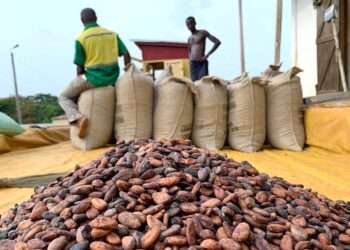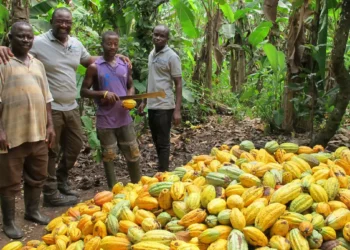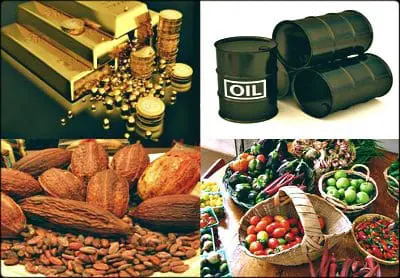The Government of Ghana, in collaboration with the World Bank, is poised to take a significant step in transforming its agricultural sector through the launch of the Ghana Tree Crop Diversification Project (TCDP).
The $227.5 million initiative will be officially unveiled on Thursday, November 14, 2024, in Accra. It aims to diversify the nation’s agricultural output while promoting sustainable economic growth, focusing on four key tree crops: cocoa, cashew, coconut, and rubber.
The TCDP comes at a crucial time when Ghana’s agricultural sector faces multiple challenges, including low productivity, limited climate resilience, and social issues such as child labor and gender inequality. The Ministry of Food and Agriculture (MoFA) highlighted these concerns in a statement on Monday, outlining the strategic goals of the new project. According to MoFA, the TCDP seeks to tackle systemic issues in the cultivation of key tree crops by introducing sustainable practices and strengthening value chain governance.
The project’s comprehensive approach includes not only boosting productivity and competitiveness but also enhancing climate resilience, thereby contributing to the reduction of greenhouse gas emissions. This aligns with Ghana’s broader commitments to environmental sustainability and climate action. By focusing on tree crops, the initiative aims to create a more resilient agricultural sector that can withstand the impacts of climate change, ensuring long-term economic stability and growth.
Multi-Component Approach for Comprehensive Development
The Ghana Tree Crop Diversification Project is structured around four main components, each designed to address different facets of the agricultural value chain: Institutional Strengthening and Value Chain Governance: This component aims to enhance the capacity of institutions involved in the tree crop sector, ensuring better coordination and governance. By streamlining regulatory frameworks and improving oversight, the project seeks to create a more robust value chain that benefits all stakeholders, from farmers to processors.
Enhancing Tree Crop Productivity and Climate Resilience: Recognizing the challenges posed by climate change, this component focuses on increasing the productivity of cocoa, cashew, coconut, and rubber through climate-smart agricultural practices. By promoting sustainable farming techniques and providing access to improved seedlings, the project aims to help farmers boost yields while reducing their environmental footprint.
Support for Post-Harvest Management, Value Addition, and Market Access: One of the key barriers to profitability in the agricultural sector is post-harvest loss. This component addresses this issue by introducing measures to improve storage, processing, and transportation. Additionally, it aims to enhance value addition through agro-processing, enabling farmers to increase their income by accessing new markets and selling higher-value products.
Project Coordination, Management, Monitoring, and Evaluation: Effective implementation and oversight are crucial for the success of any large-scale project. This component focuses on the coordination and management of project activities, ensuring that goals are met on time and within budget. It also includes a robust monitoring and evaluation framework to track progress and make data-driven adjustments as needed.
Financial Backing and Strategic Partnerships
The $227.5 million project is backed by a significant financial contribution from the World Bank, complemented by a $27.5 million investment from the Ghanaian government through the Ghana Cocoa Board (COCOBOD). This partnership underscores the government’s commitment to revitalizing the agricultural sector and its willingness to collaborate with international stakeholders to achieve shared development goals.
MoFA emphasized that the financial support from COCOBOD is a strategic investment in the future of the cocoa industry, which remains a cornerstone of Ghana’s economy. By diversifying into other tree crops like cashew, coconut, and rubber, the project aims to reduce the country’s dependence on cocoa, mitigating risks associated with price fluctuations in the global market.
Beyond economic benefits, the TCDP also prioritizes social and environmental objectives. One of the key focus areas is addressing child labor and promoting gender equity within the agricultural workforce. The project plans to implement targeted interventions aimed at improving working conditions, providing educational opportunities for children, and supporting the participation of women in leadership roles within the sector.
Additionally, the project’s emphasis on climate resilience reflects Ghana’s commitment to reducing greenhouse gas emissions. By promoting sustainable agricultural practices and investing in climate-smart technologies, the TCDP aims to create a model for environmentally responsible farming that can be replicated across other sectors.
The Ghana Tree Crop Diversification Project will be implemented in 11 districts across six regions of the country, selected based on their potential for significant impact. Key areas include: Cocoa: Western North (Essam and Adabokrom) and Eastern Region (Asamankese). Cashew: Savannah Region (Bole and Sawla-Tuna-Kalba), Bono Region (Wenchi and Tain), and Bono East Region (Techiman Municipal and Techiman North). Coconut: Eastern Region (Upper West Akim and Suhum). Rubber: Eastern Region (Upper West Akim).
These locations were chosen for their suitability for tree crop cultivation, existing infrastructure, and the potential to drive economic development in their respective regions.
READ ALSO: Analyst Projects Strong Year-End Finish for GSE on Rising Market Indicators























